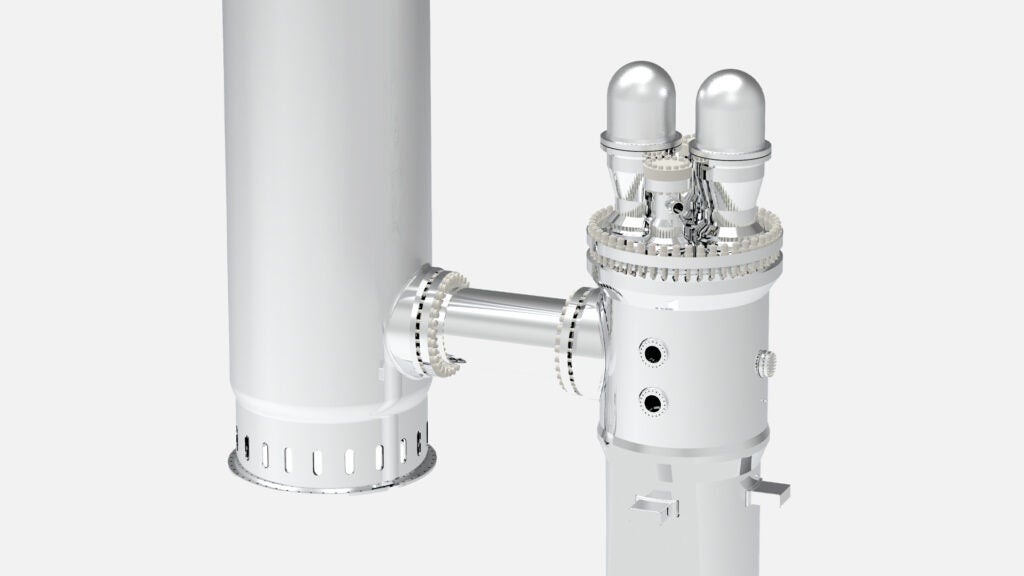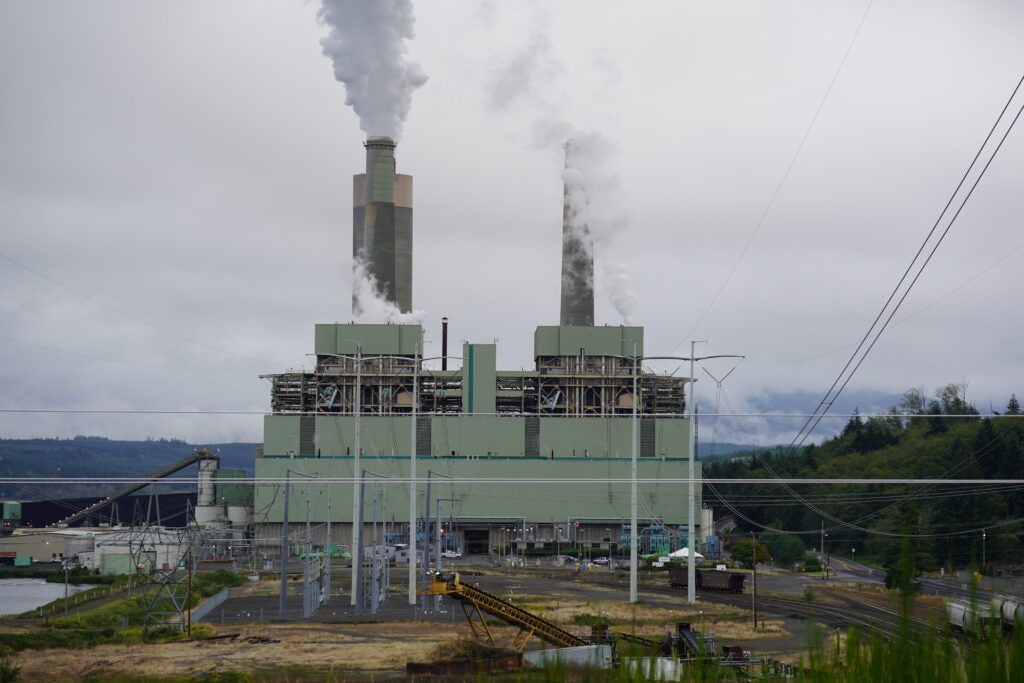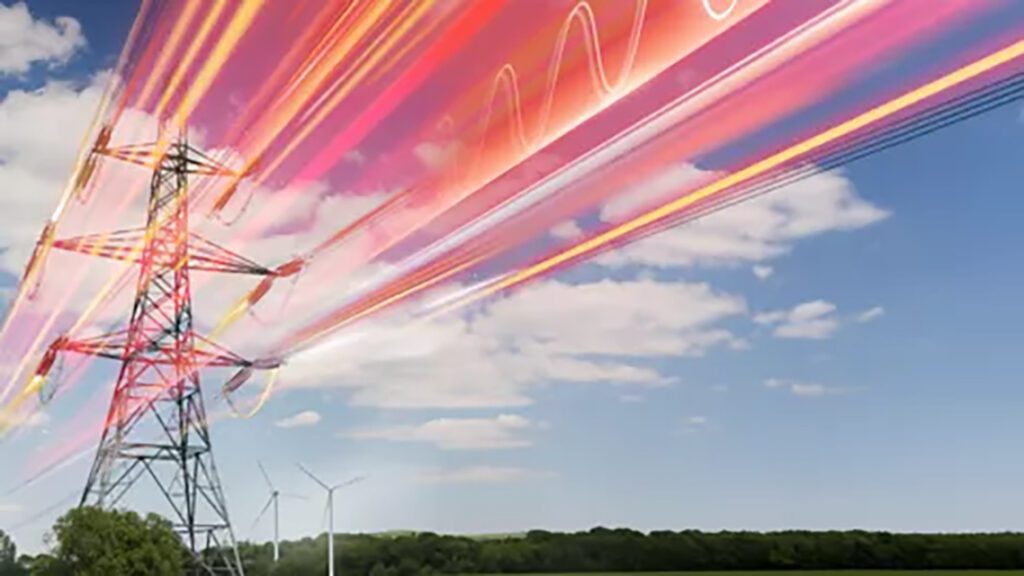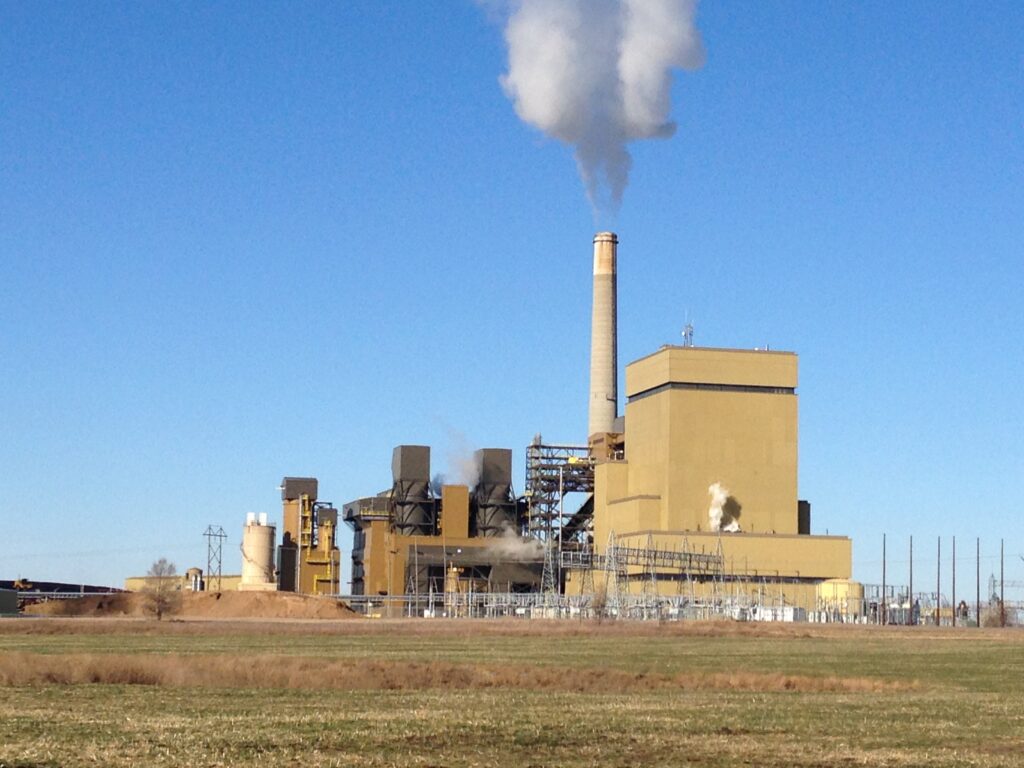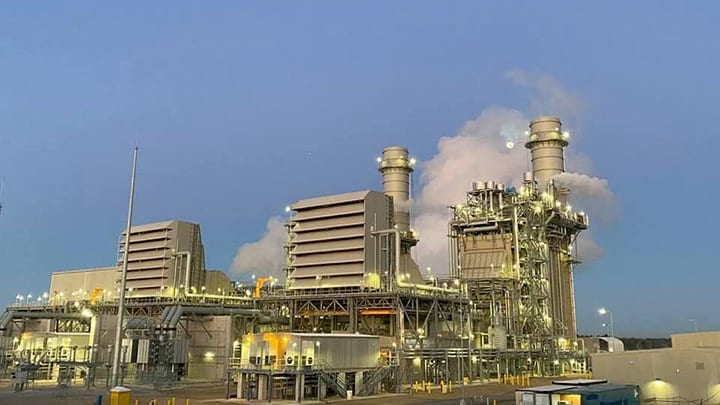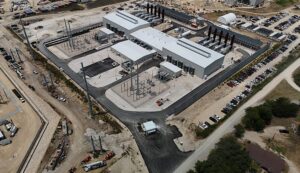
The Public Utility Commission of Texas (PUCT) has executed its first agreement under the Texas Energy Fund (TxEF) Completion Bonus Grant (CBG) Program, awarding the Lower Colorado River Authority (LCRA) up to $22.56 million for its 188-MW Timmerman Power Plant Unit 1, a new natural gas–fired plant in Caldwell County, Texas. The agreement marks the operational launch of Texas’s performance-contingent funding mechanism, which is designed to accelerate dispatchable generation projects connecting to the Electric Reliability Council of Texas (ERCOT) grid before June 1, 2029.
Timmerman Unit 1, which features 10 high-efficiency Wärtsilä 50SG natural gas reciprocating engines, supplied under LCRA’s multiyear procurement program, delivers roughly 190 MW of fast-start peaking capacity on a 51-acre site near Maxwell in Caldwell County. Unit 1, which was formally connected to the ERCOT grid in August 2025, is the first of two identical Wärtsilä-engine peaker units planned for the site, built by Minnesota-based Fagen as its engineering, procurement, and construction contractor. According to the PUCT, Unit 1 can start within 45 seconds and reach full output within five minutes.
Under the CBG grant structure, the LCRA—a Texas river authority that supplies wholesale power and operates a growing fleet of natural gas peaker plants—may receive annual payments of up to $2.256 million over a 10-year period. Each payment is contingent on the plant’s operational performance during a June-to-May “test period” as measured by ERCOT and benchmarked against a reference group of other thermal generation resources.
“Texas’ electric grid is evolving rapidly to meet the needs of our growing economy and rising energy demand,” said PUCT Chairman Thomas Gleeson on Nov. 10. “I am pleased to see the TxEF’s Completion Bonus Grant Program is already incentivizing ‘speed to market’ in the construction of safe, reliable power plants in Texas. This LCRA power plant will help us both meet the needs of today and prepare our grid for the future.”
Reliability Pressures Drive State-Funded Acceleration
Texas’s operational launch of its CBG program arrives as the state grapples with extraordinary demand growth and mounting pressure to expand dispatchable capacity. At ERCOT’s September 2025 board meeting, the grid operator’s president and CEO, Pablo Vegas, warned that the absence of new peak demand records is masking the system’s underlying risk. While ERCOT has not exceeded its August 2023 all-time peak of 85,508 MW, settled energy consumption has been growing at a rate of more than 5% annually since 2021, significantly outpacing the estimated 1% average growth rate from 2000 to 2020, he said.
Vegas likened the situation to “the proverbial frog that’s boiling slowly in a pot of water,” noting that rapid demand growth—driven by data centers, industrialization, and electrification—combined with winter “tail events,” which he described as “not a normal weather situation” but “an extreme weather situation… in particular, a tail event in the winter,” creates “a real and present risk that we have to continue to keep our eye on.” Unlike summer peaks supported by large solar additions, he stressed that winter tail events depend on “thermal and long-duration resources,” because those conditions occur before sunrise or after sunset and can persist longer than short-duration resources can sustain.
The “good news,” he said, is that ERCOT is also seeing an unprecedented wave of new resources approaching interconnection. ERCOT’s latest quarterly stability assessment—the outlook for January through March 2026—shows “6,000 MW of proposed generation planning to be connected during that time period,” the largest quarterly total ERCOT has recorded. The mix includes “over 3,000 MW of energy storage, a little over 1,000 MW of gas and over 2,000 MW of solar.” On the gas side, he noted that it is “a pretty significant number for one quarter, seeing a gig in one quarter,” adding that three of the four gas units expected to connect are part of the Texas Energy Fund proposals and projects, leveraging state-backed incentives to accelerate dispatchable additions. In parallel, ERCOT highlighted rapid advancement on its temporary mobile-generation project for the South Texas transmission constraint, including the mobilization of 15 Life Cycle Power mobile units. Life Cycle and CenterPoint Energy’s agreement with ERCOT allows the generators to run through March 2027.
An Aggressive Legislative Push for Dispatchable Capacity
The efforts mark substantial progress for efforts championed by Texas policymakers to aggressively fund dispatchable capacity in the aftermath of Winter Storm Uri in 2021. The Texas Legislature passed Senate Bill (SB) 2627, known as the Powering Texas Forward Act, and Gov. Greg Abbott signed it into law on June 9, 2023. The legislation established the Texas Energy Fund (TxEF), which was approved by Texas voters through Constitutional Proposition 7 on November 7, 2023. Legislature appropriated $5 billion for fiscal years 2025-2026 and an additional $4 billion for fiscal years 2027-2028, providing the state’s most ambitious sustained commitment to grid infrastructure investment in decades.
The TxEF comprises four distinct programs administered by the PUCT, collectively providing $9 billion in funding through fiscal year 2028. Since its launch in 2024, the fund has allocated $2.3 billion for loans supporting 3,109 MW of new generation for the ERCOT grid, and selected 10 projects totaling $621.65 million to strengthen reliability for nearly 400,000 Texas customers outside ERCOT.
The largest TxEF component is the In-ERCOT Generation Loan Program, which offers 20-year loans at a fixed 3% interest rate to build or expand dispatchable generation of 100 MW or more. Loan amounts are capped at 60% of project costs, with the program authorized to finance up to 10,000 MW of new capacity.
As of Oct. 30, 2025, the PUCT has approved five loan agreements totaling $2.3 billion for 3,109 MW of new generation capacity.
- Kerrville Public Utility Board (Rock Island Generation Project): a 122-MW natural gas facility in Colorado County, approximately 10 miles south of Columbus, featuring six MAN Energy Solutions reciprocating internal combustion engines with fast-start capability. The $105 million loan (60% of the total project cost of $175 million), announced in June 2025, is targeting summer 2027 operations.
- NRG Inc. (TH Wharton Generating Station): a 456-MW simple-cycle natural gas facility at the existing plant in Harris County (Houston area), interconnecting to the ERCOT Houston Load Zone. The $216 million loan (60% of $360 million total project cost) targets summer 2026 operations. Abbott announced this expansion on Aug. 4, 2025.
- NRG Inc. (Cedar Bayou Generating Station): a 721-MW combined-cycle natural gas unit at an existing facility in Chambers County near Baytown, interconnecting to ERCOT Houston Load Zone. The $562 million loan (60% of $936 million total project cost) anticipates summer 2028 operations. Abbott announced the Southeast Texas facility on Sept. 26, 2025.
- Calpine (Pin Oak Creek Energy Center): a 460-MW peaking facility adjacent to Calpine’s Freestone Energy Center in Freestone County (Fairfield area), interconnecting to ERCOT North Load Zone (Dallas-Fort Worth metroplex). The plant is designed to start within minutes. The $278 million loan (60% of $464 million total project cost) targets summer 2026 operations. Abbott announced the Freestone County project on Oct. 14, 2025.
- Competitive Power Ventures (CPV Basin Ranch Energy Center): a 1,350-MW combined-cycle natural gas facility in Ward County (West Texas Permian Basin) featuring two 1×1 combined-cycle power plants with GE Vernova H-Class (7HA.03) gas turbines, designed for future carbon capture integration. The facility will interconnect to ERCOT West Load Zone, with a $1.12 billion loan (60% of the total project cost of $1.88 billion) and operations scheduled for 2029. The largest TxEF investment to date, the loan was announced on Oct. 30, 2025.
The PUCT, notably, began accepting In-ERCOT loan applications on June 1, 2024, and the submission window closed on July 27, 2024. The first loan agreement was signed on June 25, 2025. So far, 12 additional applications representing 5,861 MW of proposed dispatchable generation are in due diligence review, suggesting a robust pipeline and continued developer interest. The PUCT must make initial disbursements for each approved In-ERCOT loan by Dec. 31, 2025, unless it grants an extension due to market factors affecting project schedules.

Completion Bonus Grant (CBG) Program Based on Performance
The CBG program represents just one component of a diversified state strategy. The program essentially provides performance-contingent grants to companies for dispatchable generation projects of 100 MW or more that interconnect to ERCOT before June 1, 2029. Unlike the In-ERCOT Loan Program’s fixed rates and terms, the CBG ties payments directly to operational metrics, creating dual incentives: speed to market (earlier interconnection dates trigger higher per-MW awards) and sustained reliability performance. Resources interconnecting before June 1, 2026, are eligible for $120,000 per MW; those connecting between June 1, 2026, and June 1, 2029, receive $80,000 per MW. Grants are paid over 10 years, with annual payments contingent on ERCOT-measured performance during “test periods” (June 1–May 31) evaluated against a reference group of other thermal generation resources in ERCOT.
According to the PUCT, the program’s performance metrics are stringent. ERCOT calculates the Performance Reliability Factor (PRF)—the average ratio of each resource’s real-time high sustainable limit to its obligated capacity during the 100 hours with the least operating reserves (termed “assessed hours”)—and the Availability Reliability Factor (ARF), measuring the proportion of time the resource was available and not in planned outage. Resources performing at or above the 90th percentile with ARF between 0.9 and 1.0 receive full annual payments; those between the 50th and 90th percentiles receive discounted payments; and those at or below the median receive no payment for that test period.
“Annual payments are contingent upon the performance of the power plant. Performance is measured by ERCOT during an annual “test period” and compared to the performance of a reference group of other generation resources in the ERCOT region. Specific performance metrics are outlined in the PUCT’s CBG rule,” the PUCT said on Monday.
Second Timmerman Unit Under Construction
For LCRA’s Timmerman Unit 1—so far the only announced and executed CBG agreement—the first test period runs from June 1, 2026, to May 31, 2027. ERCOT will calculate the results within 45 days of the end of each test period.
LCRA owns or has rights to approximately 3,750 MW of generation capacity serving wholesale electric customers across Central Texas. The utility’s generation portfolio includes the 1,625-MW Fayette Power Project, a three-unit coal-fired plant in Fayette County (with Austin Energy co-owning two units); the 540-MW Thomas C. Ferguson combined-cycle natural gas plant in Horseshoe Bay, which began operating in 2014; and the 176-MW Winchester Power Park natural gas peaker facility in Fayette County. LCRA also operates hydroelectric facilities across the Highland Lakes and holds ownership shares in the Sandy Creek Energy Station and Lost Pines Power Plant.
LCRA is also now developing Timmerman Unit 2, which is expected to be operational in 2026. “Unit 2 will supply about 190 MW of power, bringing the plant’s total capacity to about 380 MW,” the company says. Wärtsilä, which has supplied its 10 50SG engines, notes the technology consumes “little to no water, which is an important feature in Texas, an area often affected by drought.”
“As more people and businesses move to Texas, the state needs more dispatchable power that can be available quickly during times of peak demand,” LCRA adds. “The natural gas-fueled Timmerman Power Plant is a peaker plant that can ramp up and shut down in minutes, providing power when it is needed the most.”
—Sonal Patel is a POWER senior editor (@sonalcpatel, @POWERmagazine).



